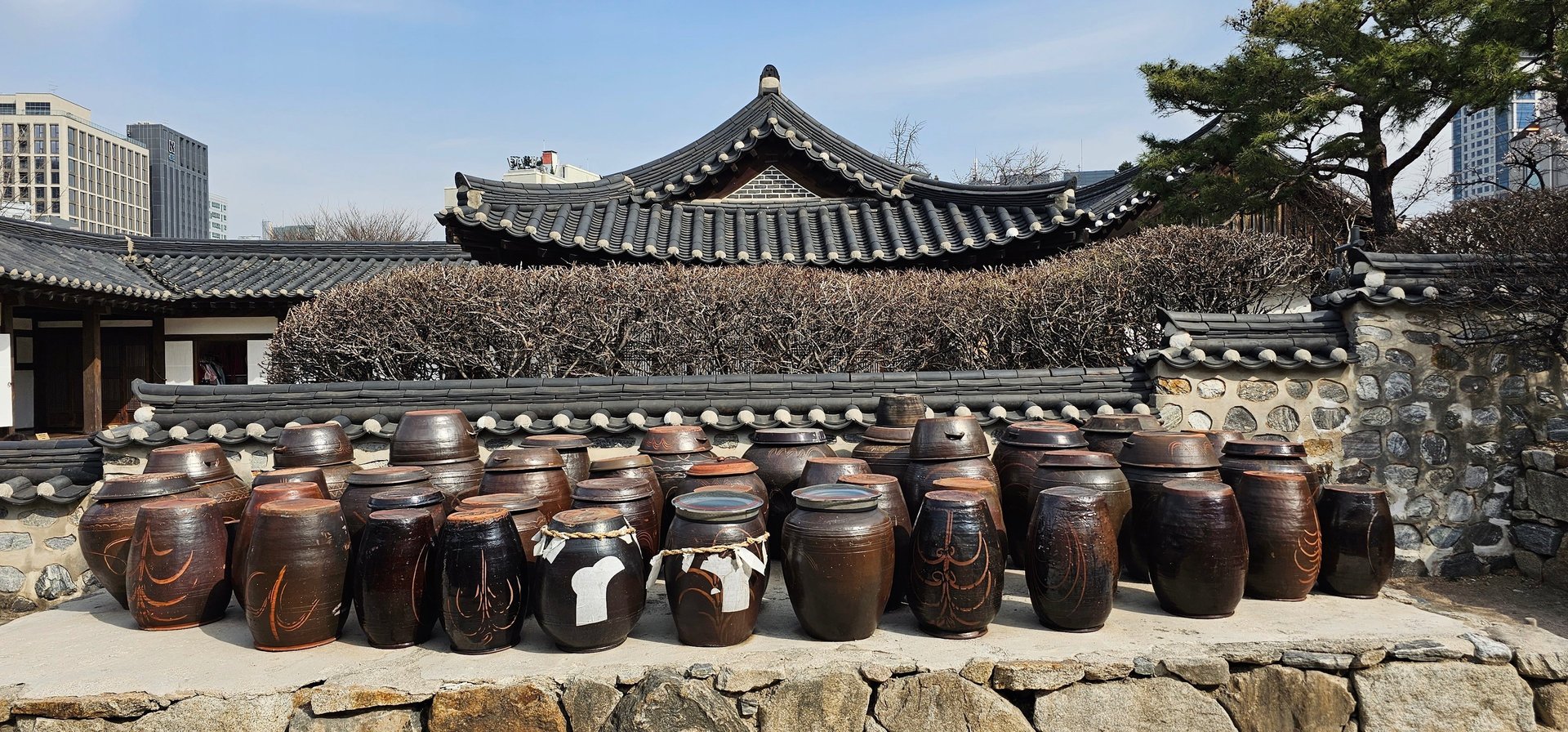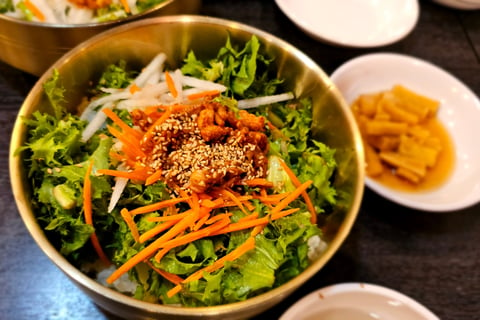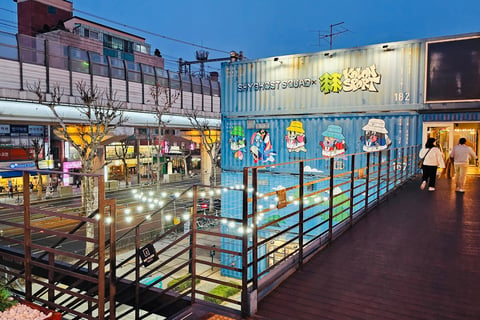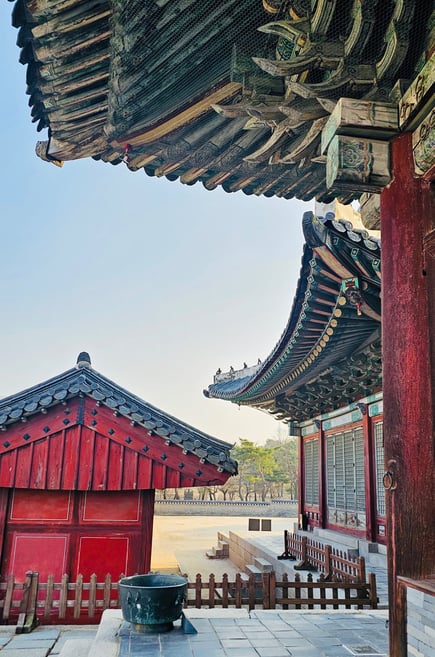
Taste Culture
IT’S TIME TO
DIVE INTO A LIFESTYLE


South Korean cuisine, known for its rich flavors, diverse ingredients, and intricate balance of spices, is a vibrant testament to the country's culinary heritage and cultural traditions. The gastronomy of South Korea is much more than just food; it's an integral part of the nation's identity, offering a sensory journey through its history, geography, and seasons. Here’s an overview that captures the essence and variety of South Korean food:
Staple Ingredients and Flavors
Rice and Noodles: The backbone of most meals, rice is served alongside various dishes, while noodles come in many forms, such as wheat, buckwheat, and sweet potato.
Kimchi: This quintessential Korean side dish, made from fermented vegetables (usually cabbage or radish) with a mix of chili pepper, garlic, ginger, and scallions, is a staple at every Korean table.
Gochujang (Chili Paste) and Doenjang (Soybean Paste): These fermented condiments are key to many Korean dishes, contributing deep flavors ranging from savory and spicy to umami.
Iconic Dishes
Bibimbap: A comforting bowl of mixed rice with seasoned vegetables, chili pepper paste, soy sauce, a fried egg, and sliced meat, often served in a hot stone pot (dolsot) to create a crispy rice bottom.
Bulgogi and Galbi: Marinated beef (bulgogi) or ribs (galbi) grilled to perfection. The marinade typically includes soy sauce, garlic, sugar, sesame oil, and pureed pear, which tenderizes the meat and adds a hint of sweetness.
Samgyeopsal: Thick, fatty slices of pork belly, similar to unsmoked bacon, grilled at the table and eaten with a dipping sauce, wrapped in lettuce leaves with garlic, scallions, and often a smear of ssamjang (a thick, spicy paste).
Japchae: A savory and slightly sweet dish of stir-fried glass noodles and vegetables, typically seasoned with soy sauce and sesame oil, often served with beef slices.
Tteokbokki: A popular street food snack made of chewy rice cakes in a thick, spicy-sweet red chili sauce, often with added ingredients like fish cakes, boiled eggs, and scallions.
Soups and Stews
Kimchi Jjigae and Doenjang Jjigae: These stews are hearty and flavorful, with kimchi jjigae featuring kimchi, tofu, pork (or tuna), and vegetables, while doenjang jjigae is made with soybean paste, tofu, vegetables, and often seafood or beef.
Sundubu-jjigae: A spicy stew made with uncurdled tofu, seafood (or meat), and vegetables, served boiling hot in a stone pot.
Street Food and Snacks
Gimbap: Seaweed rice rolls filled with various ingredients like spinach, pickled radish, and fish cake, resembling sushi rolls but with distinctly Korean flavors.
Hotteok: Sweet pancakes filled with a mixture of brown sugar, honey, chopped peanuts, and cinnamon, popular in winter.
Beverages
Soju and Makgeolli: Soju, a clear, vodka-like spirit, and makgeolli, a milky, slightly sweet rice wine, are traditional Korean alcoholic beverages often consumed during meals and social gatherings.
Teas: Traditional teas, including green tea, barley tea, and ginseng tea, are widely consumed, each offering unique health benefits and flavors.
South Korean cuisine is deeply communal, with meals often shared from the same dishes, encouraging a sense of togetherness and celebration. The food is not just nourishment but an expression of the country's rich history, regional diversity, and seasonal changes, making it an essential experience for anyone seeking to understand the heart and soul of Korea
COLORFUL NEIGHBORHOODS
Insadong
In the heart of Seoul, Insadong is a vibrant neighborhood known for its traditional Korean tea houses, antique shops, and art galleries. The main street, Insadong-gil, is lined with shops selling everything from traditional Korean crafts to modern souvenirs. It's a great place to find traditional Korean pottery, fabrics, and artworks.
Myeongdong
A bustling shopping district, Myeongdong is famous for its wide range of shops, from high-end international brands to local Korean cosmetics stores. The streets are also lined with street food vendors offering delicious snacks like tteokbokki (spicy rice cakes), gyeran-bbang (egg bread), and soft-serve ice cream in unique flavors.


Hongdae
Known for its youthful and artistic vibe, Hongdae is the neighborhood surrounding Hongik University. It's famous for its vibrant nightlife, indie music scene, unique cafes, and fashion shops selling the latest trends. The Hongdae Free Market on weekends is a great place to see and purchase handmade arts and crafts.
Itaewon
Itaewon is known for its multicultural atmosphere, with a wide array of international restaurants, bars, and clubs. It's a popular spot for both expats and locals, offering cuisines from around the world. The area has also become known for its boutique shops and trendy cafes.
Gangnam
Made famous by the hit song "Gangnam Style," this upscale district is known for its luxury boutiques, skyscrapers, and bustling entertainment venues. Gangnam is a symbol of South Korea's rapid economic growth and is a hub for fashion, technology, and business.
Bukchon Hanok Village
Nestled between Gyeongbokgung Palace, Changdeokgung Palace, and Jongmyo Shrine, Bukchon Hanok Village is home to hundreds of traditional Korean houses (hanoks) dating back to the Joseon Dynasty. Walking through its narrow lanes offers a glimpse into the city's historical lifestyle contrasted with the modern cityscape.
Samcheongdong
Adjacent to Bukchon Hanok Village, Samcheongdong is known for its fusion of traditional and modern architecture, with its quaint cafes, galleries, and boutiques set against the backdrop of traditional Korean houses. It's a peaceful area perfect for leisurely strolls.
Dongdaemun
Famous for its 24-hour shopping malls and the iconic Dongdaemun Design Plaza (DDP), Dongdaemun is a major fashion hub in Seoul. The area is a shopper's paradise, with numerous markets and shopping centers that sell everything from textiles to electronics.
Each of these neighborhoods offers a unique slice of Seoul's diverse character, from the traditional and historic to the cutting-edge modern. They're not just places to visit but experiences to immerse yourself in, offering insights into the city's rich culture, history, and contemporary life.
ANCIENT MONUMENTS
South Korea, a country with a rich history spanning thousands of years, is home to numerous ancient monuments that reflect its cultural heritage and historical significance. These monuments, ranging from palaces and fortresses to tombs and temples, offer insight into the lives, beliefs, and artistic achievements of the ancient Korean people. Here's an overview of some notable ancient monuments in South Korea:
Gyeongbokgung Palace
Located in Seoul, Gyeongbokgung Palace is the largest of the Five Grand Palaces built during the Joseon Dynasty (1392–1897). Founded in 1395 by King Taejo, the palace has been the heart of the kingdom and served as the official residence of the royal family. Although much of the palace was destroyed during the Japanese invasions of Korea (1592–1598) and the Japanese colonial period, extensive restoration efforts have brought many of its structures back to their former glory.
Bulguksa Temple
A masterpiece of Buddhist art and architecture, Bulguksa Temple is located on the slopes of Mount Toham in Gyeongju, the ancient capital of the Silla Kingdom. Built in 774 during the reign of King Hyegong, the temple is renowned for its exquisite stone pagodas, Dabotap and Seokgatap, as well as the Seokguram Grotto, a hermitage filled with Buddhist statues overlooking the East Sea. Bulguksa is designated as a UNESCO World Heritage Site, representing the spiritual and architectural advancements of the time.


Changdeokgung Palace and Huwon
Changdeokgung Palace, another one of Seoul's Five Grand Palaces, is especially noted for its beautiful garden, Huwon (Secret Garden), which was used by the royal family for leisure and entertainment. Built in 1405, Changdeokgung is considered the most well-preserved of the Joseon palaces, showcasing traditional Korean architecture and design principles that harmonize with the natural environment. It has been recognized as a UNESCO World Heritage Site for its outstanding representation of Korean palace architecture and garden design.
Hwaseong Fortress
Located in Suwon, Hwaseong Fortress was constructed from 1794 to 1796 during the reign of King Jeongjo of the Joseon Dynasty. This extensive fortification was built to honor and house the remains of the king's father and to prepare for a potential move of the capital from Seoul to Suwon. The fortress features a unique blend of Eastern and Western architectural styles and includes massive walls, gates, watchtowers, and artillery towers. It is a UNESCO World Heritage Site, celebrated for its innovative design and engineering.
Jongmyo Shrine
Jongmyo Shrine is the royal ancestral shrine of the Joseon Dynasty, where memorial services for deceased kings and queens are performed. Constructed in the 14th century, it is one of the oldest and most authentic of the Confucian royal shrines to have been preserved. The shrine's simple and elegant architectural style is in accordance with Confucian principles, and its annual rites, featuring ancient music and dance, are designated as a UNESCO Intangible Cultural Heritage of Humanity.
Seokguram Grotto
Part of the Bulguksa Temple complex, the Seokguram Grotto is a stone temple carved into the mountainside, housing a monumental statue of the Buddha looking out to sea. Completed in 774, the grotto is a significant achievement of Buddhist art in the Far East, with the Buddha statue and surrounding stone reliefs considered masterpieces of East Asian Buddhist sculpture. The grotto is also listed as a UNESCO World Heritage Site, alongside Bulguksa Temple.
These ancient monuments are not just tourist attractions but sacred sites that continue to hold great cultural and spiritual significance. They provide a window into South Korea's past, showcasing the country's rich history, religious traditions, and architectural ingenuity.
Discover Your Seoul Tour
Come with us! This tour will enhance all your senses on what you already know about South Korea. Immerse yourself and follow your dreams into this land that melds ancient culture, modern technology, and beautiful sights.
$2,000
FROM
*
CONTACT US
South Korea is an amazing place to immerse yourself into a rich culture, which can surprise you with its history, monuments, celebrations and, of course, food. Contact us so we can help you organize a memorable stay at one of the most magical places on the planet.
